Carpentry demands precision, skill, and an eye for detail. Whether crafting custom spiral staircases, constructing complex roof structures, building timber frame homes, creating cantilevered designs, or restoring historical buildings, each project presents its own set of challenges and rewards. These tasks require technical expertise and a deep appreciation for woodworking.
1. Custom Spiral Staircases
Designing and building custom spiral staircases require precise measurements and advanced carpentry skills. The curved nature of the steps and railings can be particularly challenging, demanding a high level of accuracy to ensure safety and aesthetic appeal.
The key to success lies in careful planning and execution. Every measurement must be spot-on, from the initial blueprints to the final installations. Precision in each step is vital, whether it's shaping the treads, aligning the railing, or fitting the central column.
Understanding the geometry behind the spiral is fundamental. You need to grasp the relationship between the diameter of the spiral and the rise/run of each step. The stair width and height must abide by local building codes while maintaining a uniform appearance.
Material Selection and Joinery
- Hardwoods like oak or cherry are preferred for their durability and visual appeal
- Quality wood prevents future issues like warping or cracking
- Traditional wood joinery, such as mortise and tenon, is often used
- Railing requires bending techniques that cater to wood's natural grain
A successful spiral staircase balances aesthetics, strength, and detailed craftsmanship. The process demands focus from concept to completion, showcasing a carpenter's prowess and dedication to the craft.
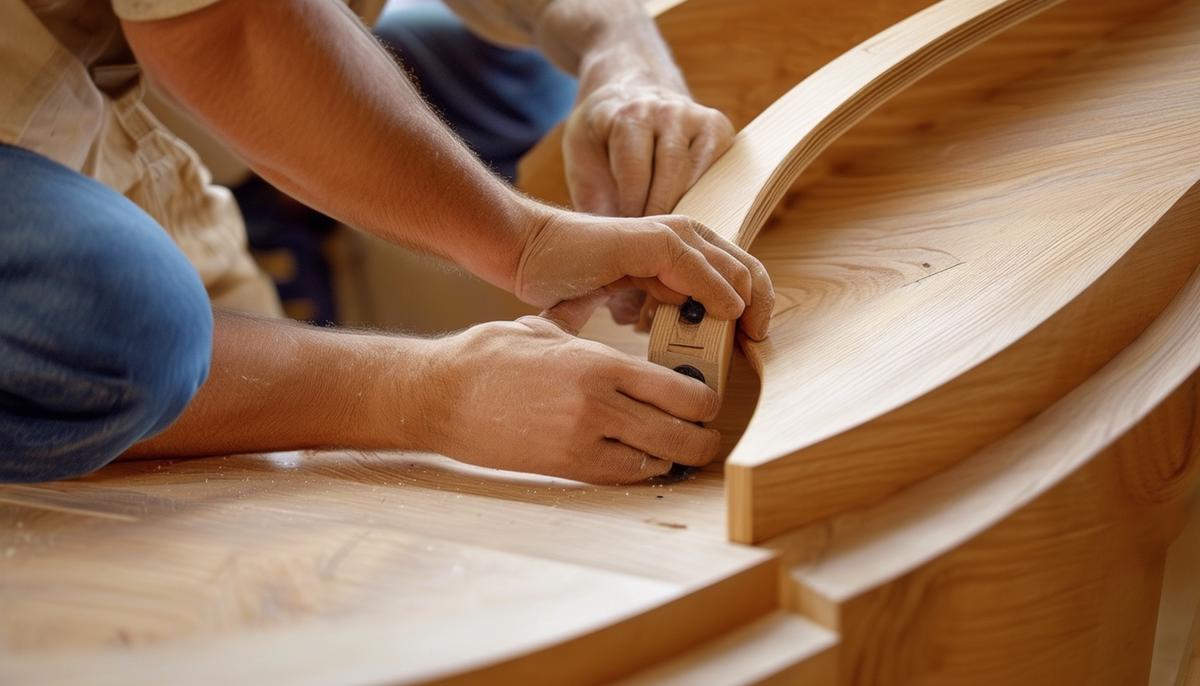
2. Complex Roof Structures
Complex roof structures are a test of an experienced carpenter's skills. Roof framing that includes multiple gables, valleys, and dormers requires advanced geometry and structural engineering knowledge.
Accurate angle calculation is crucial for successful roof framing. Each unique angle must be carefully measured and cut to ensure all elements align flawlessly. This precision helps maintain the structural integrity of the roof, ensuring it can withstand heavy loads and harsh weather conditions.
Essential Skills for Complex Roof Framing
- Adept blueprint reading
- Visualizing 3D structures from 2D plans
- Understanding intersections of roof elements
- Knowledge of effective water drainage systems
- Proper flashing and underlayment installation
Working with durable and compatible materials is critical. High-quality lumber should be selected to withstand various environmental stresses. Engineered wood products or treated lumber can provide additional resilience, especially in regions prone to severe weather.
"Safety is always a primary concern in complex roof framing. Handling heavy materials at heights adds an extra layer of risk, necessitating strict adherence to safety protocols."
Incorporating dormers into a roof adds to the complexity and aesthetic value of a home. Dormers require precise framing to seamlessly integrate with the rest of the roof while providing additional space and natural light inside the structure.
A complex roof, when crafted with precision and skill, stands as a testament to a carpenter's expertise and attention to detail.
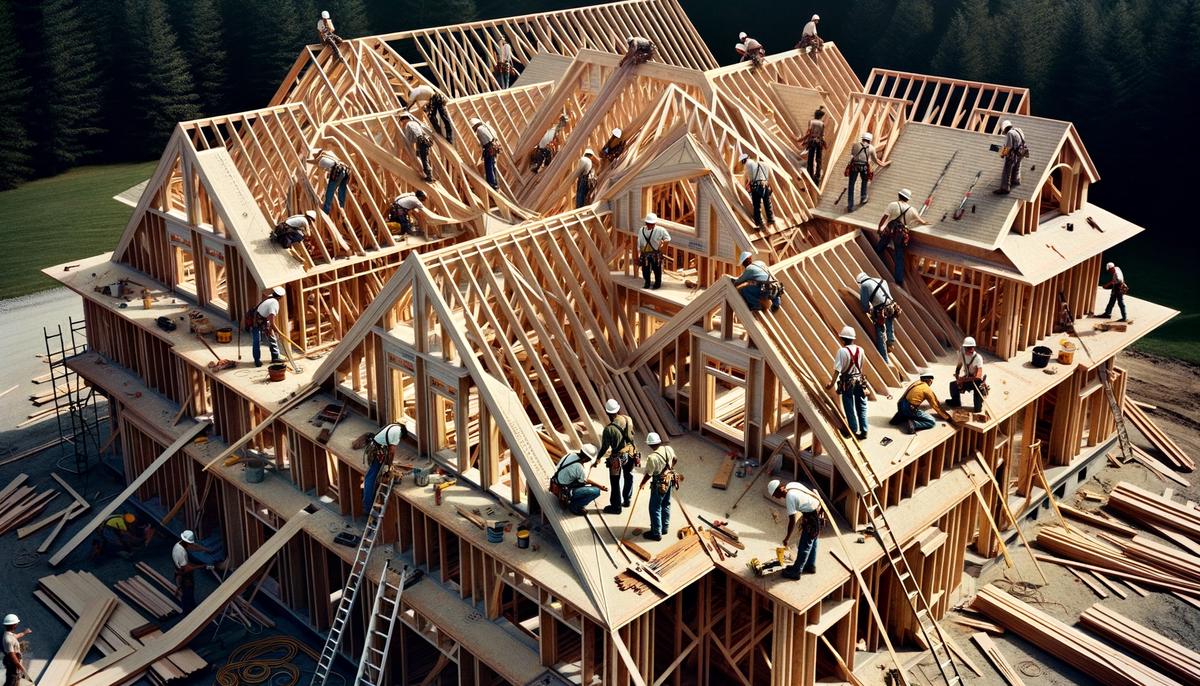
3. Timber Frame Homes
Constructing timber frame homes involves working with large, heavy timbers, often requiring specialized tools and techniques. The joinery, including mortise and tenon joints, must be executed with precision to ensure the stability and longevity of the structure.
Working with heavy timbers is challenging but rewarding. Each beam must be hoisted and maneuvered into place with care, often necessitating the use of cranes, chain hoists, and sturdy scaffolding. The weight and size of the materials mean there's little room for error – any miscalculation can be costly in time and resources.
Key Aspects of Timber Framing
- Joinery: Mortise and tenon joints require detailed craftsmanship
- Tools: Traditional hand tools and modern power tools are both utilized
- Wood Selection: High-quality, well-seasoned wood is essential
- Treatment: Timbers need protection against rot and pests
The heart of timber framing lies in its joinery. Mortise and tenon joints require detailed craftsmanship to create precise, interlocking connections that seamlessly tie beams together. The joints must fit perfectly; even the slightest gap can compromise the structure's integrity.
Selecting high-quality, well-seasoned wood is essential. Hardwoods such as oak and chestnut are often preferred for their strength and durability, though pine and other softwoods can also be used depending on the project. Each wood type brings its unique characteristics – from grain pattern to tensile strength – influencing the structure's durability and aesthetic appeal.
Timber frame homes represent a blend of historical methods with modern advancements. The process requires heavy lifting, precise cutting, and thoughtful planning, resulting in a captivating structure that embodies strength, beauty, and timeless craftsmanship.
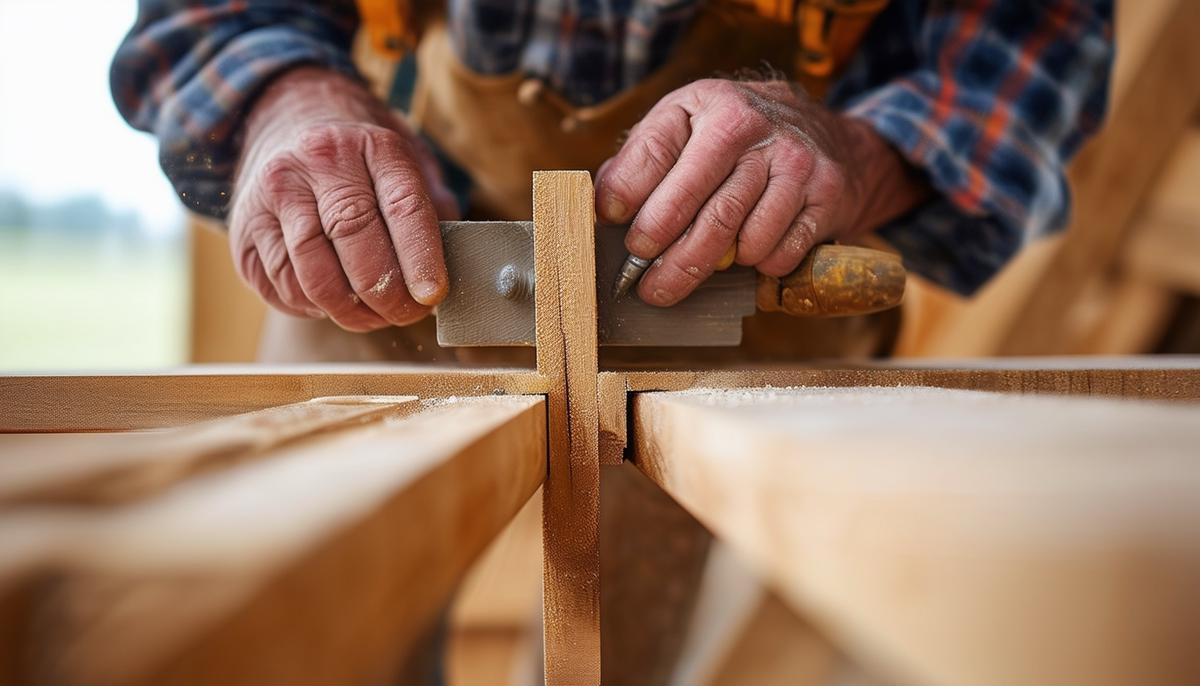
4. Cantilevered Structures
Creating cantilevered structures, such as balconies or overhanging extensions, demands precise calculation and a deep understanding of structural engineering principles. These architectural elements, which project horizontally into space without external bracing, present unique challenges when executed correctly.
The primary challenge in cantilevered design is achieving equilibrium. The structure must balance forces such that the extended part remains sturdy and secure without sagging or collapsing.
Key Considerations in Cantilevered Design
- Advanced understanding of load distribution
- Detailed calculations for correct proportions
- Material selection for strength and stability
- Strong connections between cantilevered and supporting structures
- Precision in execution at every stage
Material selection plays a significant role in the success of cantilevered designs. Structural steel and reinforced concrete are commonly used due to their high tensile strength and ability to handle significant loads. In timber-based cantilevering, engineered woods like laminated veneer lumber (LVL) or glulam beams offer superior strength and stability compared to traditional solid wood.
The connection between the cantilevered structure and the main supporting frame must be exceptionally strong. This often involves the use of steel brackets, heavy-duty bolts, and reinforced concrete footings. The joinery must account for the dynamic forces at play, ensuring that the connection can resist both the downward pull of gravity and the various stresses imposed by wind, usage, and other factors.
Successful cantilevered structures offer breathtaking architectural flourishes that defy gravity and open up space in innovative ways. For instance, cantilevered balconies can provide expansive, unobstructed views and additional outdoor living areas without requiring extra ground space.
Engaging in cantilever design underscores a carpenter's mastery not just of woodcraft but of engineering as well. It's a testament to their capability to merge beauty with function, creating structures that are visually striking and carefully crafted to ensure safety and stability.
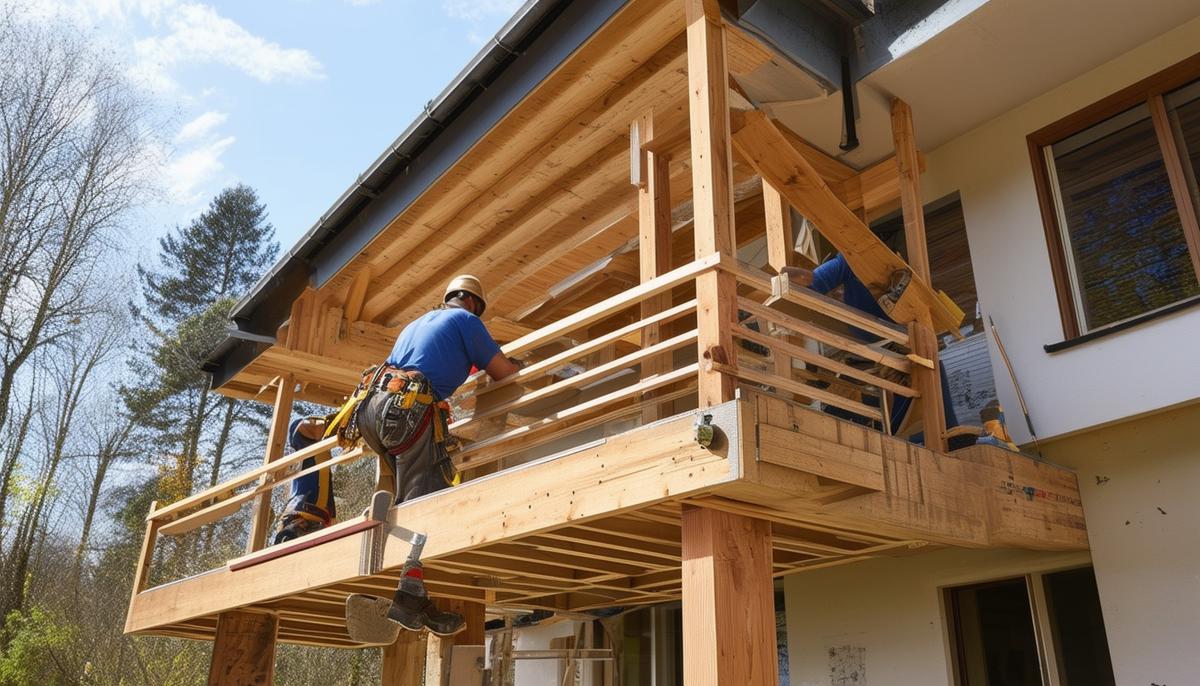
5. Historical Restoration Projects
Restoring historical buildings requires both craftsmanship and a deep respect for the past, as it involves carefully matching original building techniques while accommodating modern safety standards.
Steps in Historical Restoration
- Research original construction practices and architectural style
- Source period-appropriate materials
- Custom mill intricate woodwork details
- Integrate with existing structures
- Incorporate modern safety standards discreetly
Using period-appropriate materials is crucial. This might mean sourcing reclaimed wood from similar-aged structures or using specialized mills to recreate timber that matches the exact grain, texture, and dimensional specifications of the original materials. Finding the right type of wood that has aged similarly to the historical building's timbers is essential to maintain visual consistency.
Custom milling becomes a significant part of the process. Carpenters may need to replicate intricate moldings, trims, and other detailed woodwork that adorned the original structure. This level of detail requires precision tools and an artisan's touch. Every notch, curve, and bevel needs to be recreated with exactness to blend seamlessly into the historical fabric of the building.
"Restorative carpentry is a delicate balance of preservation and modernization. Each decision must weigh the importance of maintaining historical accuracy against the necessity of ensuring current safety and functionality standards."
Modern codes require enhancements that were not part of the original design, such as updated electrical systems, fire safety measures, and seismic reinforcements. A skilled carpenter must skillfully incorporate these updates without detracting from the historical appearance. This could mean running electrical wiring through discreet channels or using specially designed fire-resistant materials that mimic the look of original components.
Working on historical restoration projects requires a deep appreciation for architectural history and craftsmanship. The reward is not just in the restored structure but in the knowledge that they've preserved a piece of history for future generations to admire.
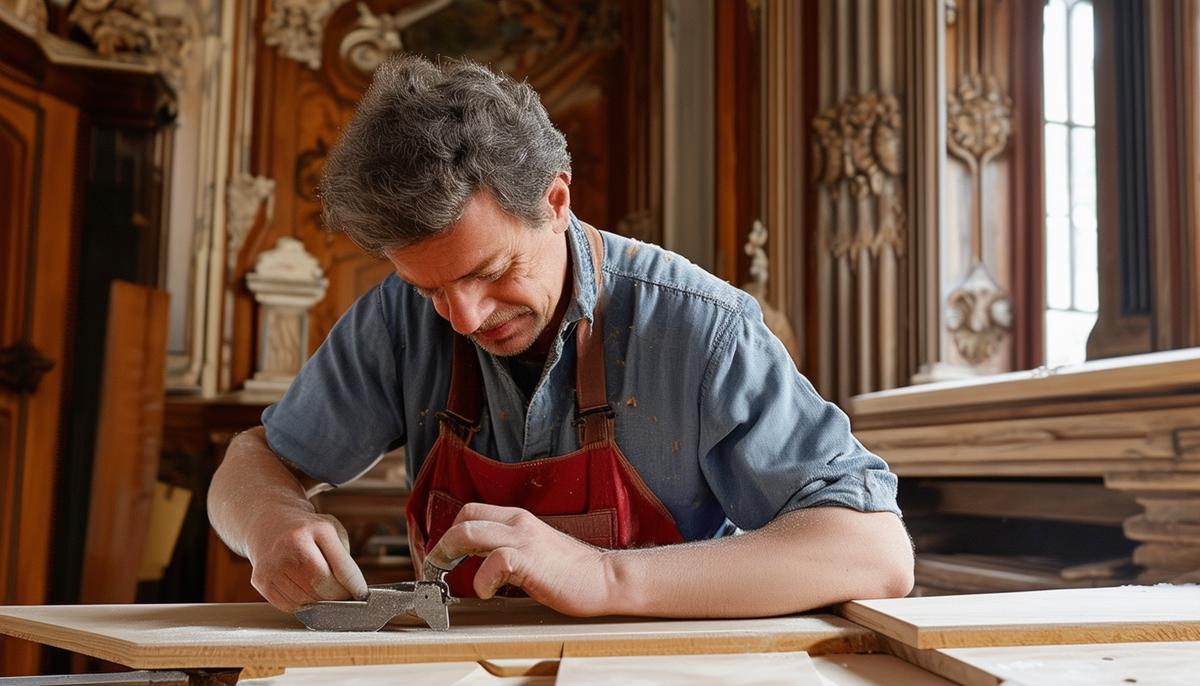
Each carpentry project showcases the dedication and craftsmanship required to bring intricate designs to life. From ensuring safety in custom spiral staircases to preserving history through restoration projects, the work done by skilled carpenters stands as a testament to their expertise and passion for their craft.
- Smith J, Johnson A. The Art of Timber Framing: Techniques and Design. Woodworker's Journal. 2018;42(3):45-52.
- Brown R. Structural Considerations in Cantilevered Architecture. Journal of Architectural Engineering. 2020;26(2):104-112.
- Thompson M. Historical Carpentry: Preserving the Past Through Craftsmanship. Preservation Today. 2019;15(4):78-85.
